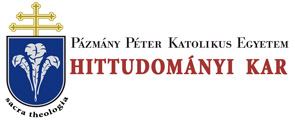Folia Theologica et Canonica 3. 25/17 (2014)
IUS CANONICUM - Anne J. Duggan, The paradox of marriage law: from St Paul to Lateran IV (1215)
198 ANNE J. DUGGAN letter (Caput nostrum),33 supposedly addressed to Bishop Felix of Messina, which ‘explained’ that the allowance to the English (Angli) of marriages in the fourth generation was only a temporary concession to a people new in the faith, and that the prohibition should extend usque ad septimam generationem.1* In addition to circulating separately,35 this forgery was used by Gregory I’s later biographer (John the Deacon, f ante 882) to gloss the relevant extract from the Liber responsionumThus misconstrued, Gregory’s instruction exercised a pervasive influence in the following centuries, until it was received by Bur- chard of Worms (t 1025) in the early eleventh century. Burchard then accomplished a misconstruction of his own. He inserted Isidore of Seville’s stemmata of family relationships (derived from Roman law) into his compilation of decrees on incest (de incesta) in Book vii of his Decretami and interpreted them as a seven-generation table of prohibited degrees,38 33 Pseudo-Isidore, PL LXXX. 1134-1138; cf. Hinschius, P. (ed.), Décrétâtes Pseudo-Isidorianae et Capitula Angilramni, Lipsiae 1863 (repr. Aalen 1963) 749. Fuhrmann, H., The Pseudo- Isidorian Forgeries, in Jasper, D. - Fuhrmann, H., Papal Letters in the Early Middle Ages, Washington DC. 2001. 7-81, at 138 n. 5. For the latest study on the context and origins of the compilation of Pseudo-Isidore, see Knibbs, E., The Interpolated Hispana and the Origins of Pseudo-Isidore, in ZRG Kan. Abt. 130 (2013) 1—71. 3J JE +1334: PL LXXVII. 1322-1328, at 1323-1324. The spurious character of this text is uncontested: Machielsen, L., Les sparii de S. Grégoire le Grand en matière matrimoniale dans les collections canonique jusqu’au Décret de Gratien, in Sacris Erudiri 14 (1963) 251-70, at 260-1, no. 7 (a). Jasper, D., Papal Letters of the Merovingian and Carolingian Periods, in idem and Fuhrmann, H., Papal Letters in the Early Middle Ages, Washington DC. 2001. 89-134, at 101 n. 53. Fuhrmann, H., The Pseudo-lsidorian Forgeries, ibid., 135-195, at 138 n. 5, 168— 169. Toledo II, 527: ne quis fidelium propinquam sanguinis sui usquequo affinitatis liniamenta generis successione cognoscit. 35 Some copies of the responsum of Pope Zacharius (741-752) to Bishop Theodore of Pavia (Pyta- cium: PL LXXXIX. 957-99,8 no. 20, dated 745-752), have a final §, ‘De ilio vero capitulo (...) Séd ipse pius (...) Romana ecclesia’, which seems to have knowledge of the ‘Messina letter’, but neither JE 2306 nor Italia Pontificia, VI/1. 174 no. 3, include that section in their summary of Pytacium. In the Council of Rome (743), c. 15, Zacharius referred to claims from the Germans that Gregory I had allowed them to marry in the fourth generation, which he glossed with the comment, Quod quidem licitum Christianis non est, dum usque se generatio cognoverit (MGH Concilia, II/l. 20). Excerpts from the supposed correspondence between Felix and Gregory were quoted in full in the Epistola Synodica sent to the bishops of Aquitaine by the council held at Douzy (dep. Ardennes) in 874, under the authority of Charles the Bald, then king of the West Franks: MGH, Concilia, IV. 579- 596, at 582-3. 36 JLlxxv, 101-102. 37 Etymologiae, IX.5: De adfinitatibus et gradibus', IX.6: De agnatis et cognatis (PL LXXXII. 353-363). Cf. IX.6 §29 for the stemmata stirpis humanae (a circular table of relationships). 38 Decretum, VII (PL CXL. 779-787, esp. 784-786: VII.28): Corbet, P., Autour de Burchard de Worms: L’église allemande et les interdits de parenté (IXème-XIIème siècle), in lus Commune (Sonderhefte 142), Frankfurt 2001. 89-98,113-114. Thier, A., Dynamische Schriftlichkeit. Zur Normbildung in der vorgratianischen Kanonessammlungen, in ZRG Kan. Abt. 124 (2007) 1-33. Ubl, K., Inzestverbot und Gesetzgebung, 384^476. Cf. Rolker, C., Two Models of Incest: conflict and confusion in high medieval discourse on kinship and marriage, in Law and
